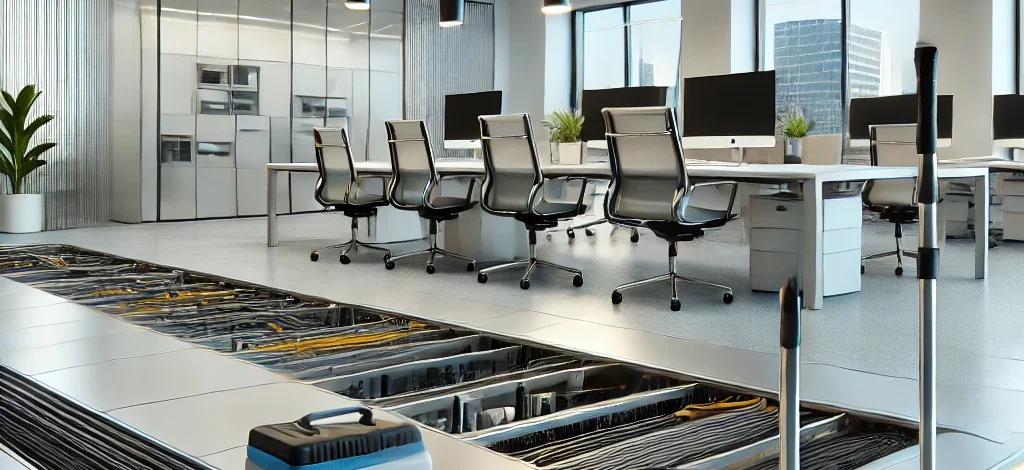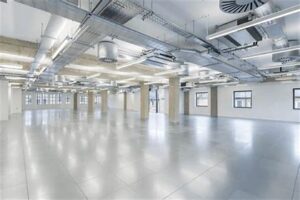Simplifying Raised Flooring Maintenance: Best Practices
Discover “Simplifying Raised Flooring Maintenance: Best Practices” – your ultimate guide to maintaining raised flooring with ease. Packed with practical tips and proven methods, this guide ensures long-lasting performance and reduced maintenance costs for your raised floors. Achieve a pristine, professional look effortlessly!
Maintaining raised flooring systems doesn’t have to be a daunting task. With “Simplifying Raised Flooring Maintenance: Best Practices,” you’ll have access to a comprehensive roadmap for ensuring your raised floors remain in top-notch condition. Whether it’s for data centers, offices, or commercial spaces, this guide is designed to simplify your maintenance routine, enhance durability, and extend the lifespan of your flooring investment.
Why Is Maintenance Essential?
Raised flooring systems are integral to modern infrastructure, offering accessibility, improved airflow, and aesthetic value. However, without proper care, these benefits can diminish. Regular maintenance prevents wear and tear, mitigates risks like structural instability, and ensures that your flooring continues to perform optimally.
Core Highlights of the Guide
- Cleaning Techniques: Learn safe cleaning practices to prevent damage to panels and finishes.
- Inspection Schedules: Follow a systematic approach to check for loose tiles, cracks, or signs of moisture.
- Preventative Measures: Understand how to safeguard your floors against heavy loads, spills, and environmental changes.
- Repair Tips: Step-by-step instructions for replacing tiles, repairing frames, and addressing minor damages before they escalate.
- Prolonged Durability: Expert advice on maintaining aesthetic and structural integrity over time.
Maintenance Tips Tailored to Your Needs
- Daily Care: Use anti-static dusters to remove surface dust and debris. Avoid abrasive cleaning tools to prevent scratches.
- Monthly Checks: Inspect underfloor voids for signs of moisture or pests. Ensure cables and mechanical systems beneath the floors are functioning properly.
- Annual Deep Cleaning: Use professional-grade equipment to clean deeply embedded dirt and sanitize surfaces.
Benefits You’ll Gain
- Enhanced safety for employees and equipment.
- Reduced repair costs through proactive maintenance.
- Extended lifespan of your raised flooring system.
- A clean, professional, and welcoming appearance.
This guide is ideal for facility managers, technicians, and anyone responsible for maintaining raised flooring systems. Equip yourself with the knowledge and tools to keep your investment secure and performing at its best.
Specifications Table
| Feature | Details |
|---|---|
| Guide Type | Digital & Printable Guide |
| Length | Comprehensive 25-page guide |
| Maintenance Focus | Raised Flooring Systems |
| Cleaning Instructions | Included |
| Inspection Checklists | Included |
| Repair Techniques | Detailed Step-by-Step |
| Environmental Safeguards | Eco-Friendly Tips |
| Target Users | Facility Managers, Technicians |
| Applications | Data Centers, Offices, Commercial |
| Durability Insights | Long-Term Maintenance Tips |
| Accessibility Features | Easy-to-Use Layout |
| Graphics | High-Quality Illustrations |
| Usability Rating | Beginner to Advanced Friendly |
| Compatibility | Universal Flooring Brands |
| Updates | Free Lifetime Updates |
| Support | 24/7 Online Assistance |
FAQs
Q1: How often should I clean raised flooring? A1: Perform daily surface cleaning and schedule deep cleaning every 6-12 months, depending on foot traffic and environmental conditions.
Q2: Can I use regular cleaning products on raised floors? A2: It’s best to use non-abrasive, anti-static cleaning solutions to avoid damaging finishes or compromising static control properties.
Q3: What are common signs that raised flooring needs repairs? A3: Look for loose or wobbly panels, visible cracks, water stains, or warping. Address these issues promptly to prevent further damage.
Q4: Can heavy equipment damage raised flooring? A4: Yes, heavy equipment can cause stress and lead to panel deformation. Use protective load spreaders to distribute weight evenly.
Q5: Is this guide suitable for all types of raised flooring? A5: Absolutely! The practices outlined in this guide are compatible with most raised flooring systems, including wood-core, concrete, and steel panels.
Why Choose “Simplifying Raised Flooring Maintenance: Best Practices”?
- Comprehensive Expertise: Offers a deep dive into all aspects of raised flooring maintenance.
- Cost-Effective Solutions: Reduces expensive repairs with preventative tips.
- User-Friendly Design: Easy-to-follow instructions with visual aids.
- Broad Compatibility: Applicable to diverse industries and flooring types.
- Trusted by Professionals: Endorsed by facility managers and maintenance experts.
Pros and Cons Table
| Pros | Cons |
| Clear and Concise Guidelines | Requires consistent implementation |
| Enhances Longevity of Flooring Systems | Initial time investment for setup |
| Prevents Costly Repairs | May not address rare, extreme cases |
| User-Friendly for All Skill Levels | Relies on user adherence to schedules |
| Eco-Friendly Practices Included | Some techniques need specific tools |
|
|
|
|



